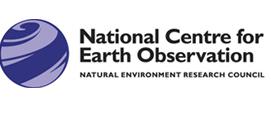Climate Change 11-19
This is a list of resources specifically selected to support the Polar Explorer Programme.
- ALL
- Teacher guidance
- Research
- Video
- Audio
- Article
- Group work
- Activity sheet
- External link
- Other
Teacher guidance
Climate change in the Polar regions
In this resource children will work with hypothetical data to help them understand how mathematics can model real life situations, enabling them to reflect on how mathematics might be used to help scientists make predictions about the possible impact of climate change in the Polar regions.
Skill 2.7 What's the Evidence?
Although written for post-16, this resource could easily be adapted for other age groups. You could use the suggested strategies with the film 'Climate Change: The Causes' (above) to support students in developing their ability to evaluate what they read or watch about controversial issues.
The Global Warming article, which is used as an example in this resource, could be used to stretch higher ability students. Ask students to read through the article in pairs and highlight the sentences which are describing weather rather than climate change, and perhaps use a different colour to highlight emotive language or unsupported arguments.
Plankton and Global Warming *suitable for home teaching*
This Cape Farewell video clip features a discussion about the three important carbon cycles at work in the oceans and their place in global warming.
In Activity I - Carbon cycle, students use the video to build up diagrams of the three carbon cycles. Teachers can use the carbon cycle sequence images to follow up the work by students in Activity I and make clear the three cycles that operate on different time scales.
Global Warming
Scientists say that the average global temperature has increased by around 0.5oC over the last century. Is this evidence of global warming, initiated by the excessive production of greenhouse gases? Students will look at real monthly maximum and minimum temperature and rainfall data taken in Southampton and Sheffield over the last 100 years to see if they can find any evidence of this warming. They will plot a graph and analyse the data using a computer package such as Excel.
Carbon Cycle Caper
In this series of activities from the Science Museum, students understand the carbon cycle, how it has been affected by our use of fossil fuels since the Industrial Revolution and how this underlies current worries about climate change.
Research
Ice and beyond: climate science with CryoSat
The European Space Agency (ESA), together with the scientific community, developed the CryoSat mission - ESA’s ice mission - to deliver precise measurements of sea-ice thickness and ice-cap changes.
CryoSat, with its high-precision Synthetic Aperture Interferometric Radar Altimeter, delivers observations with unprecedented accuracy and resolution, and has helped scientists to better quantify the state of the cryosphere and narrow down the uncertainty in climate modeling.
Video
Climate Change: The Causes
This programme considers the reasons why climate change can appear to be controversial. It looks at how scientists ensure their research is valid and discusses some of the moral and political dilemmas posed by climate change.
From 2014, students will need to think about objectivity, and understand that scientific theories develop as earlier explanations are modified to take account of new evidence.and ideas. They also need to appreciate the importance of publishing results and peer review.
This film can be used to encourage students to think about the views they hear on TV, radio and other social media and to think about the quality of the evidence upon which these points of view are based.
The Hypothesis
This Cape Farewell video clip explains that phytoplankton absorb carbon dioxide and can act as indicators of global warming. The video clip includes a discussion about a hypothesis that increasing phytoplankton could balance the effects of global warming.
Activity C - Making and testing hypotheses follows up the video with some questions about what constitutes a hypothesis. Activity D - Photosynthesis involves practical work to measure the rate of photosynthesis. Students can try varying the amount of dissolved carbon dioxide to find out the effect and relate the activity to the video clip.
Climate Change: the Impacts
From Teachers TV, this video looks at the potential impacts of climate change. Through interviews and natural history footage, the video focuses on examples from around the globe.
Environments including African drought plains and the diverse Bangladeshi topography are analysed. The impact that climate change is having on polar bears in the Arctic and on coral reef ecosystems in the tropics are also discussed.
Audio
Rockpools and Ocean Acidification
In this podcast from Planet Earth Online and the Natural Environment Research Council (NERC), Sue Nelson visits the Anglesey coast of north Wales to learn what these mini marine laboratories can tell us about the value of biodiversity.
The effects of climate change range from rising temperatures and higher sea levels to extreme weather and mass extinctions. Richard Hollingham reports from the Plymouth Marine Laboratory where scientists are investigating another, hidden process – increasing ocean acidification.
The final report looks at how scientists are using pan scourers to find out how communities of marine creatures might respond to chemical changes in our oceans.
Satellites and Acid Oceans
In this podcast reporters find out how satellites have revolutionised our understanding of climate change.
They provide a completely different perspective on how planet Earth works, which was impossible before the satellite revolution 30 years ago.
Today, satellites give researchers a huge range of information about the planet, including where deforestation occurs, how ice has changed in the polar regions, the temperature of the land and oceans, how ocean currents are changing and much more
Article
Climate Change Toolkit
This resource looks at models of climate change and sea ice growth.
It can be downloaded as a whole or as the individual components, which are:
• Arctic supermodels - background article
• Modelling ice thickness - worksheet and worksheet with guidance notes
• Modelling the Earth's temperature - worksheet and worksheet with guidance notes
Statistics Toolkit
This resource explores statistical aspects of an arctic expedition, including the 'spin' that can be put on statistical evidence to make it sound positive or negative, and methods to predict future trends in Arctic climate change.
The whole toolkit can be downloaded as a whole or as individual components. These are:
• Making sense of sea ice data - background article
• Predicting the trend - worksheet and worksheet with guidance notes
• Presenting the evidence - worksheet and worksheet with guidance notes.
Group work
Climate Talk
In this activity students consider the causes of climate change and the effects of their own actions. They are prompted to think about and discuss possible actions to tackle the problem. The materials contain teacher guidance, student activity sheets and information on the issues around climate change which is introduced and discussed within the context of a game that should engage students in actively learning about this important issue.
Activity sheet
Climate Change *suitable for home teaching*
This resource provides a thought-provoking question to have on the board at the beginning of the topic while the register is being taken. Students could be asked to put their thoughts on a post-it note which could be put on a display board and then re-visited at the end of the topic or lesson to see if they still agree with their initial thoughts.
Students could also use a different coloured post-it note to ask any questions they would like to find the answers to during the topic, and these could be used to inform planning
Addicted to Energy *suitable for home teaching*
After considering global warming and its impacts, would your students change their own behaviour?
Students are encouraged to think about carbon footprints. Which goods and services cause the biggest carbon dioxide emissions? What choices can we make to minimise emissions?
This resource provides opportunity for extended writing, putting together a balanced argument for and against our effect on global warming. Not all students might be convinced that we do need to save energy. The film 'How many Lightbulbs' provides a surprising argument against the impact of saving energy at home!
Carbon Footprint
Students explore the mathematics behind carbon emission measurement and the concept of carbon footprints. Basic calculations for the travel component of a carbon footprint are demonstrated here, but many other similar calculations could be performed.
Carbon Footprints
Students work with statistical information to communicate key ideas connected to reducing climate change. Students look at the carbon footprint of the average UK citizen, consider how different spheres of activity contribute to this footprint and examine ways this might be reduced. They also look at the inequity and the unsustainability of the world’s current energy usage and convey this information graphically.
Carbon and the Carbon Cycle *suitable for home teaching*
In the first activity students consider changes in the carbon cycle and imbalances caused by human activity.
The second activity looks at how carbon cycles in the environment and how carbon, in oil, is obtained for fuel. This includes the process of fractional distillation and leads on to consideration of the impacts of distributing oil products.
Talking graphs: climate change
Looking at energy use in different countries, students carry out independent research and use this information to explore the potential impact of carbon dioxide on the environment and to consider questions of justice.
Watching a Glacier (11-14)
This brief activity uses false-colour images of the Columbia glacier to introduce the idea of using sequences of satellite images to monitor change and focuses on the selection of appropriate data for an investigation.
External link
Armstrong and Miller - climate change
An amusing clip to grab students' attention! It could be used to introduce an activity where students produce an animation or presentation to explain the difference between weather and climate or to illustrate the effects of rising carbon dioxide levels
The other CO2 problem
This is a nice example of an animation produced by students to explain one impact of climate change - ocean acidification. You could link with a local university department to enrich a project like this, as has been done in this case - Ridgeway School in Plymouth worked with scientists at the Plymouth Marine Laboratory to make this film.
It would take a lot of class time for each group of students to produce a full animation, but by agreeing to a standard format (in this case plasticine) and with careful planning, each group could produce part of the script and one section of the animation to explain a particular consequence of high levels of carbon dioxide.
Uploading the film onto You Tube when it's finished will add to the sense of occasion!
Infographic
Warning - this webpage is addictive!
David McCandless is a data journalist and information designer with a passion for visualizing information with the minimum of words. We've picked out his visual representation of the effects of rising atmospheric carbon dioxide levels, but there are many more which are so usable in class for a number of topics.
Not only does this resource serve as a great source of accessible information for students, but his website also illustrates that STEM skills, such as those used by David, are useful in many careers which students may not associate with science - journalism, law, accountancy and so on. In fact, STEM skills and qualifications often lead to some of the more fascinating careers in these sectors, dare we say
Challenging environments: keeping warm
This activity requires students to do an investigation to find out what type of clothing is the warmest – and most practical – to wear in freezing environments.
Other
The Arctic Survey
On 1 March 2009, three intrepid polar explorers, Pen Hadow, Ann Daniels and Martin Hartley, set out on foot on a gruelling trip across the Arctic ice cap. The aim of their expedition, known as the Catlin Arctic Survey, was to gather data on ice thickness. This information will help to predict when the North Pole sea ice cover will melt, an event which will have dramatic consequences for the Arctic ecosystem and the Earth's climate as a whole.
The materials consist of three toolkits, focusing on some of the science that underlies the Catlin Arctic Survey, and they give students the opportunity to see mathematics and science applied to real-life problems.
Each toolkit is made up of a background article and two worksheets with guidance notes for teachers. The overview article can be read on its own, or used as motivational material for the two worksheets. The worksheets are designed to promote group discussion of the topics, as well as provide hands-on activities.

















